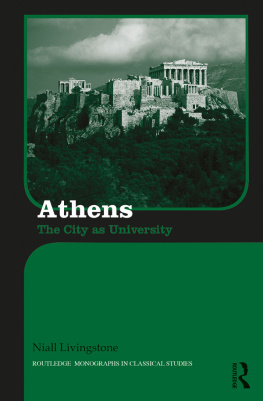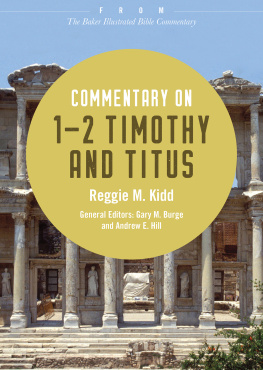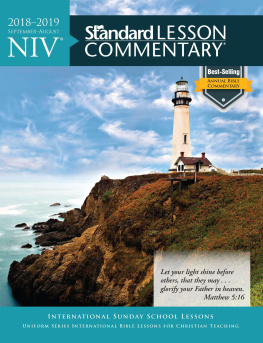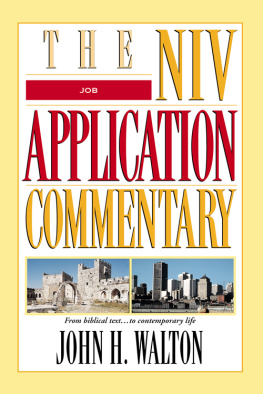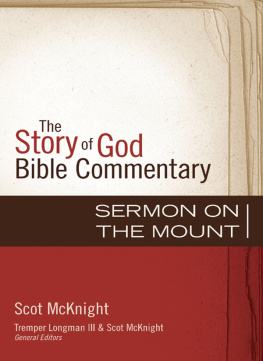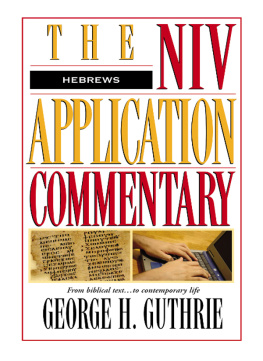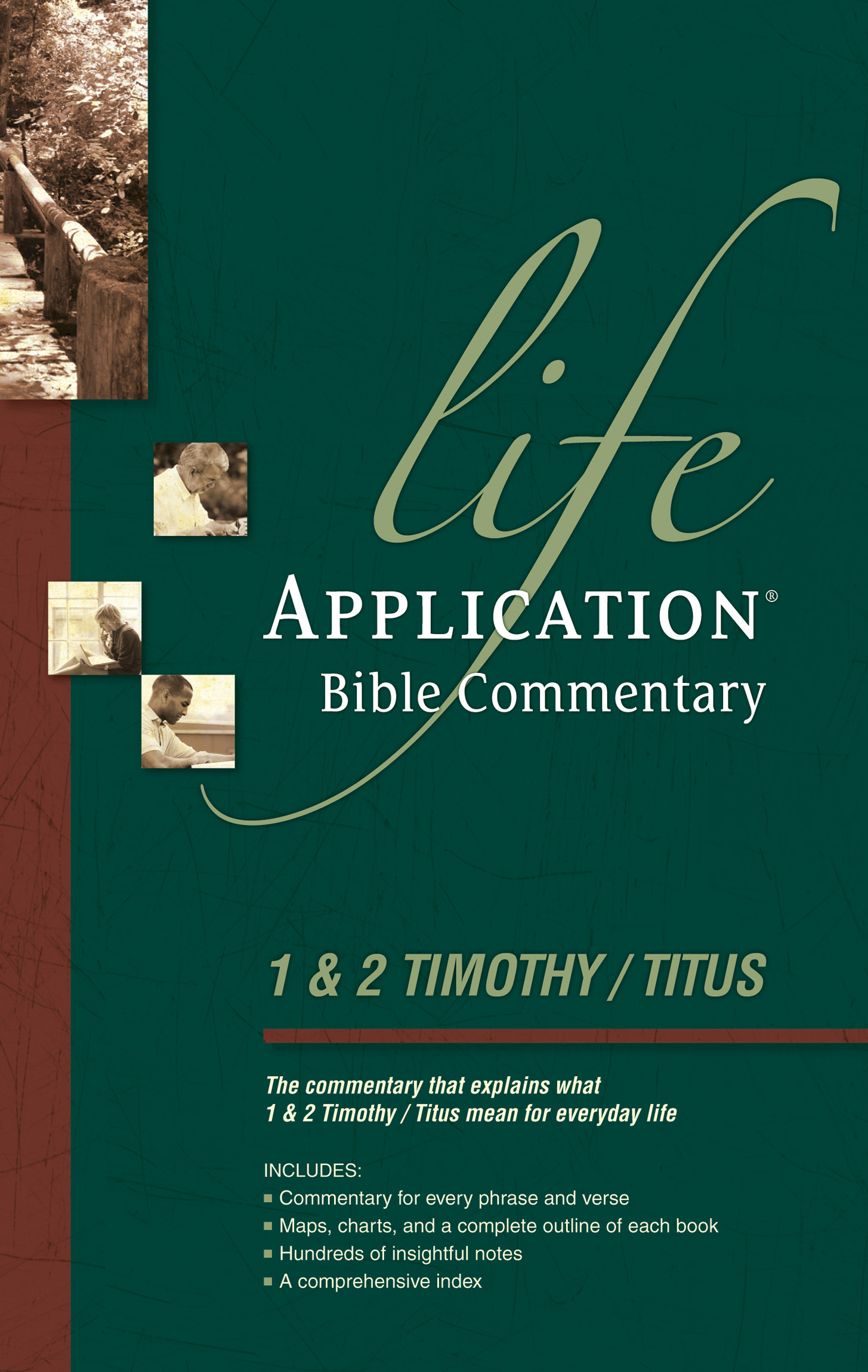Visit Tyndales exciting Web site at www.tyndale.com.
Life Application Bible Commentary: 1 & 2 Timothy and Titus
Copyright 1993 by The Livingstone Corporation. All rights reserved.
Contributing Editors: James C. Galvin, Ed.D., and Ronald A. Beers
Cover photograph of bridge and path copyright by Alyn Stafford / iStockphoto. All rights reserved.
Cover photographs of woman with a laptop and man holding a pen copyright by Dan Wilton / iStockphoto. All rights reserved.
Cover photo of man reading copyright by Ronnie Comeau / iStockphoto. All rights reserved.
Interior illustrations of compass rose, hourglass, and shepherds crook copyright 2004 by Tracy Walker. All rights reserved.
Scripture quotations marked NIV are taken from the Holy Bible, New International Version, NIV. Copyright 1973, 1978, 1984 by Biblica, Inc. Used by permission of Zondervan. All rights reserved worldwide. www.zondervan.com.
Scripture quotations marked NKJV are taken from the New King James Version. Copyright 1979, 1980, 1982 by Thomas Nelson, Inc. Used by permission. All rights reserved. NKJV is a trademark of Thomas Nelson, Inc.
Scripture quotations marked NRSV are taken from the New Revised Standard Version of the Bible, copyright 1989, Division of Christian Education of the National Council of the Churches of Christ in the United States of America. Used by permission. All rights reserved.
(No citation is given for Scripture text that is exactly the same wording in all three versionsNIV, NKJV, and NRSV.)
Scripture quotations marked KJV are taken from the Holy Bible, King James Version.
Scripture quotations marked NLT are taken from the Holy Bible, New Living Translation, copyright 1996. Used by permission of Tyndale House Publishers, Inc., Carol Stream, Illinois 60188. All rights reserved.
TYNDALE, Life Application, New Living Translation, NLT, and Tyndales quill logo are registered trademarks of Tyndale House Publishers, Inc.
Library of Congress Cataloging-in-Publication Data
Barton, Bruce B.
1 Timothy, 2 Timothy, Titus / Bruce B. Barton, David R. Veerman,
Neil Wilson.
p. cm. (Life application Bible commentary)
Includes bibliographical references and index.
ISBN 978-0-8423-2832-6 (pbk.)
1. Bible. N.T. Pastoral EpistleCommentaries. I. Veerman,
David. II. Wilson, Neil S., date. III. Bible. N.T. Pastoral
Epistles. English. 1993 IV. Title V. Title: First Timothy,
Second Timothy, Titus. VI. Series.
BS2735.3.B27 1993
227.8307dc2093-4926
Build: 2020-09-29 16:40:11 EPUB 3.0
FOREWORD
The Life Application Bible Commentary series provides verse-by-verse explanation, background, and application for every verse in the New Testament. In addition, it gives personal help, teaching notes, and sermon ideas that will address needs, answer questions, and provide insight for applying Gods Word to life today. The content is highlighted so that particular verses and phrases are easy to find.
Each volume contains three sections: introduction, commentary, and reference. The introduction includes an overview of the book, the books historical context, a timeline, cultural background information, major themes, an overview map, and an explanation about the author and audience.
The commentary section includes running commentary on the Bible text with reference to several modern versions, especially the New International Version and the New Revised Standard Version, accompanied by life applications interspersed throughout. Additional elements include charts, diagrams, maps, and illustrations. There are also insightful quotes from church leaders and theologians such as John Calvin, Martin Luther, John Wesley, A. W. Tozer, and C. S. Lewis. These features are designed to help you quickly grasp the biblical information and be prepared to communicate it to others.
The reference section includes a bibliography of other resources and an index.
INTRODUCTION TO THE PASTORAL EPISTLES
The wise coach gives his junior quarterback valuable game timethe experience will prepare the young athlete for the starting role next fall... or sooner. The wise employer watches for promising young employees, then helps them learn new skills and assume greater responsibilities. Wise parents nurture and teach their children, helping them mature and grow into responsible adults. Wise leaders serve as mentors to emerging, potential leaders.
The next generation holds a vital position in every family, institution, movement, or churchfor leadership, vision, life... for its future. The apostle Paul knew this truth.
Paul began to follow Christ as an adult. Through a dramatic confrontation on the way to capture and imprison the hated believers in Jesus, Pauls life changed dramatically (Acts 9:1-19). Soon he became known as a fearless champion of the Christian cause, a peerless evangelist, and a pioneering missionary. With strong commitment, deep courage, and boundless energy, Paul went to the ends of his world, preaching and teaching the Good News of Christ to all who would listen. Although thousands had responded to the gospel message and churches had been planted and were growing, Paul knew that the future of the Christian movement would depend on new leadership. Given the hostile environment of the Roman world and the advancing age of the apostles, in a short time the first generation of Christian leaders would be gone. Then who would direct, guide, evangelize, and spread the Word? So Paul encouraged younger coworkers like Timothy and Titus to teach these truths to other trustworthy people who will be able to pass them on to others (2 Timothy 2:2 NLT ).
Paul followed his own advice as he worked closely with younger believers, Timothy and Titus, helping them deepen their faith and developing them for leadership. Timothy was a second-generation Christian; his mother, Eunice, and grandmother Lois were Jewish believers who helped lead him to Christ (2 Timothy 1:5; 3:15). A young Greek man, Titus was converted to Christ through Pauls ministry. In fact, Paul presented him to the leaders of the church in Jerusalem as a living example of the ministry among the Gentiles (Galatians 2:1-3). Because of the tremendous potential Paul saw in these two men, he groomed them for leadership in the church. And he gave them detailed instructions on how to choose other church leaders, specifically elders and deacons.
Pauls instructions to his protgs are included in three letters, preserved as the Bible books 1 Timothy, 2 Timothy, and Titus. Although these letters are known as the Pastoral Epistles, Timothy and Titus were not pastors of individual congregations. Rather, they served as apostolic representatives sent to Ephesus and Crete, respectively, to help organize the churches under the leadership of other trained elders and deacons.
Some scholars have proposed that the Pastoral Epistles were not written by Paul but by a later admirer of Paul who imitated Pauls writing style and attached Pauls name to them. This theory arises from the difficulty of matching the events mentioned in these letters with the book of Acts. And if, as had been surmised, Pauls Roman imprisonment ended with his execution, it seems impossible to date these letters prior to his death. In addition, some believe that the writing style in these letters differs from the other Pauline Epistles. The content seems to differ as well, with little or no emphasis on Christs return (contrasting greatly with 1 and 2 Thessalonians). Instead, the local congregation of believers is central in the Pastoral Epistlesthe writer is concerned with church organization and theological purity.


